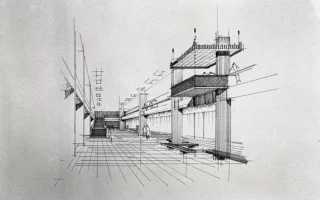Introduction:
Great architecture transcends mere structures; it embodies a fusion of artistry, functionality, and cultural significance. From the timeless wonders of ancient civilizations to the contemporary marvels of modern cities, architecture serves as a reflection of human creativity and ingenuity. But what truly makes architecture great? Let’s delve into the intricacies and explore the elements that define remarkable architectural achievements.
I. Visionary Design:
A. Conceptualization:
Great architecture begins with a visionary concept, a bold idea that challenges conventions and pushes the boundaries of creativity.
B. Innovation:
Innovative design solutions distinguish exceptional architecture, whether it’s the daring cantilevers of Frank Lloyd Wright or the sustainable innovations of contemporary eco-friendly structures.
II. Harmonious Integration:
A. Contextual Sensitivity:
Great architecture respects its surroundings, seamlessly integrating with the natural landscape or the urban fabric.
B. Cultural Relevance:
Architecture serves as a vessel for cultural expression, embodying the values, traditions, and aspirations of a society. From the grandeur of Gothic cathedrals to the minimalist elegance of Japanese temples, cultural influences shape architectural masterpieces.
III. Functional Excellence:
A. Form Follows Function:
The axiom coined by Louis Sullivan underscores the importance of functionality in architectural design. Great architecture not only captivates the eye but also fulfills practical needs efficiently.
B. User Experience:
Architecture influences human experiences, shaping how we interact with spaces and fostering a sense of connection and belonging.
IV. Structural Integrity:
A. Engineering Ingenuity:
Behind every iconic structure lies meticulous engineering, balancing aesthetic aspirations with structural stability.
B. Material Innovation:
From the enduring strength of ancient stone temples to the cutting-edge materials of contemporary skyscrapers, material innovation plays a pivotal role in defining architectural greatness.
V. Timelessness:
A. Enduring Appeal:
Great architecture transcends temporal boundaries, captivating the imagination of successive generations with its timeless beauty and relevance.
B. Adaptive Reuse:
The ability of architectural masterpieces to adapt to evolving needs and contexts ensures their relevance in an ever-changing world.
VI. Social Impact:
A. Community Engagement:
Architecture has the power to foster social cohesion, creating spaces that facilitate interaction, inclusivity, and collective identity.
B. Sustainable Design:
In an era of environmental consciousness, great architecture embraces sustainable principles, minimizing its ecological footprint and contributing to a more resilient built environment.
Conclusion:
Great architecture is more than the sum of its parts; it embodies a holistic fusion of vision, function, and cultural resonance. From the majestic monuments of antiquity to the innovative skyscrapers of the 21st century, architectural greatness endures as a testament to human creativity and aspiration. By embracing visionary design, harmonious integration, functional excellence, structural integrity, timelessness, and social impact, architects shape the built environment and leave a lasting legacy for generations to come.




